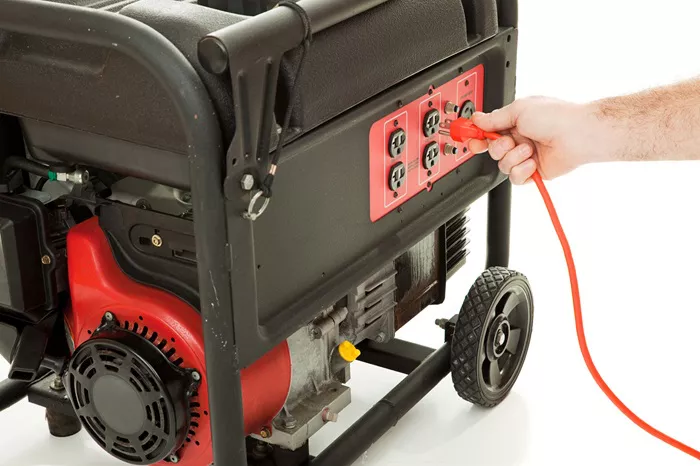Portable generators are invaluable tools for providing backup power during outages, especially in areas prone to severe weather or those with unreliable power grids. However, connecting a portable generator to your home requires careful attention to safety and the proper equipment. This article outlines the steps and precautions to consider when connecting a portable generator to your home.
Understanding the Basics
A portable generator can be a lifesaver, powering essential appliances such as refrigerators, lights, and medical equipment during a power outage. However, it is crucial to understand that connecting a portable generator directly to your home’s electrical system can be dangerous if not done correctly. Incorrect wiring can cause backfeeding, which occurs when electricity flows from the generator back into the utility grid, posing a risk to utility workers and potentially causing damage to your electrical system.
Step 1: Choose the Right Generator
Before you begin, ensure that the portable generator you plan to use is capable of powering the essential appliances in your home. The generator’s wattage must meet or exceed the combined wattage requirements of the appliances you wish to run simultaneously. Check the manufacturer’s specifications to determine both the starting and running wattage of each appliance. A generator with too little power may struggle to operate your devices, while one that is too large may be inefficient.
Additionally, consider whether your generator is designed for outdoor use. It is essential to keep the generator outside to avoid the risk of carbon monoxide poisoning, which can occur in enclosed spaces.
Step 2: Use a Transfer Switch
The safest and most effective way to connect a portable generator to your home is by using a transfer switch. A transfer switch is a device that safely isolates your home’s electrical system from the power grid, preventing backfeeding. It also ensures that power is properly routed from the generator to your home’s circuits.
There are two main types of transfer switches:
Manual Transfer Switch: A manual transfer switch requires you to manually select which circuits you want to power during an outage. You will typically have to plug in the generator, start it, and flip switches to direct the power where it is needed.
Automatic Transfer Switch: An automatic transfer switch automatically detects when the grid power goes out and switches your home’s circuits over to the generator’s power. This type of transfer switch offers greater convenience but is more expensive and typically requires professional installation.
Step 3: Install the Transfer Switch
Installing a transfer switch is a job that should be handled by a licensed electrician, as it involves wiring your home’s electrical system to the generator safely. The electrician will install the transfer switch near your breaker panel and ensure it is properly connected to the generator inlet box, which is a weatherproof receptacle for the generator’s power cord.
While some homeowners may be tempted to install the switch themselves, it is critical to adhere to local electrical codes and safety standards. Improper installation can lead to hazardous situations, such as electrical fires or electrocution.
Step 4: Properly Position the Generator
Once the transfer switch is installed, the next step is setting up your portable generator. Always place the generator outdoors in a well-ventilated area, at least 10 feet away from your home and any open windows or doors. Make sure the area is dry, and avoid placing the generator in areas where it could be exposed to rain or snow.
Additionally, ensure that the generator is on a level surface to prevent it from tipping over while in use. Keep the generator away from flammable materials, and check that the exhaust pipe is unobstructed.
Step 5: Connect the Generator to Your Home
After ensuring that the generator is positioned safely, connect the generator to your home’s electrical system via the transfer switch. Use the appropriate power cord, which typically has a twist-lock connector on both ends, one for the generator and one for the transfer switch inlet box.
Before starting the generator, make sure that all circuits connected to the transfer switch are turned off. This will prevent an overload when the generator is powered up. Start the generator according to the manufacturer’s instructions, and once it is running smoothly, turn on the circuits you wish to power.
Step 6: Safety Precautions
When using a portable generator, always keep these safety precautions in mind:
Never run a generator indoors. Always operate the generator outside, away from windows and doors, to prevent carbon monoxide buildup.
Fuel safety: Never refuel a running generator. Allow the generator to cool down before adding fuel to prevent the risk of fire or explosion.
Monitor the generator: Keep an eye on the generator while it’s running. If you hear any unusual sounds or notice any issues, turn it off and have it inspected.
Regular maintenance: Follow the manufacturer’s recommended maintenance schedule for your generator to keep it running safely and efficiently.
Conclusion
Connecting a portable generator to your home requires careful planning and adherence to safety protocols. The most reliable and safe method is to use a transfer switch, which eliminates the risks of backfeeding and ensures that your home receives power from the generator without compromising the integrity of your electrical system. Always prioritize safety, and consult a professional electrician if you’re unsure about any aspect of the installation. With the right preparation and equipment, a portable generator can provide peace of mind during power outages and help keep your home running smoothly.

